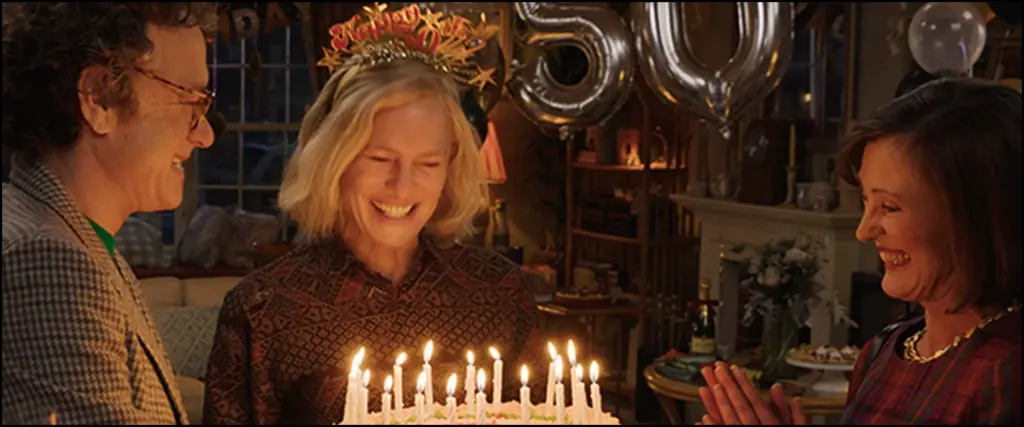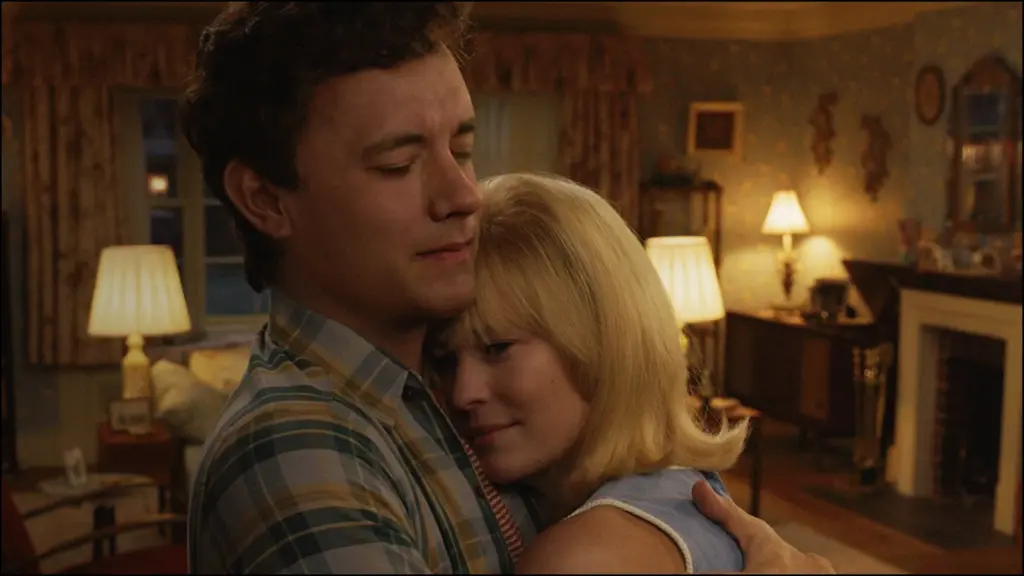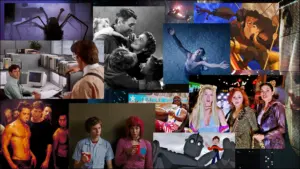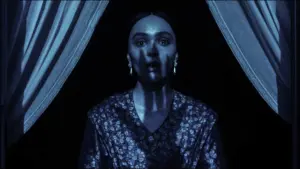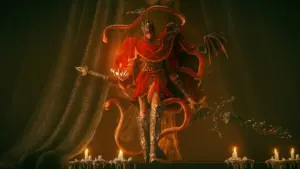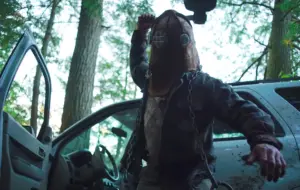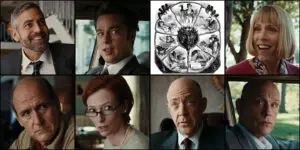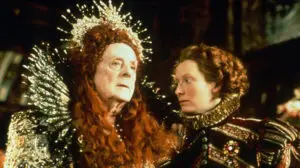Forrest Gump and Jenny are reunited after 30 years! Well, not literally, but the actors who played them, Tom Hanks and Robin Wright, are back in the new movie Here by Robert Zemeckis, director of Forrest Gump. This casting “easter egg” is surely a clue to the kind of tone Zemeckis intended for Here. Like Gump this is a movie that wants to pluck our heartstrings and jerk our tears, leaving us inspired and moved while also entertained and technologically wowed.
Arguably Zemeckis has managed to achieve his lofty artistic ambitions at least half a dozen times in a career that includes the masterpieces Back to the Future and Who Framed Roger Rabbit. (I’ll leave you to fill in your own choices for the others, Dear Reader.) But almost all of his artistic successes were before the millennium. Since the invention of motion capture CGI, Zemeckis has become so obsessed with the technological “wow” factor that he seems to have lost touch with the human element.
Here is another one of Zemeckis’s CGI experiments. The movie is the history of one place on earth — from prehistory, through the time of Native Americans, to the post-World War 2 era and today — told entirely in one shot. The camera never moves, and there are no actual cuts, just dissolves and wipes. Watching Here feels like watching a futuristic play with only one set. I imagine this is what virtual-reality movies might be like someday soon.
The story is told nonlinearly. Visually recalling the graphic novel the film was based on, frames from another time period will appear within the shot mimicking panels in a comic strip, layering time periods over each other like a collage in a photo album. We see a man and his son and grandson all standing in the same space, right where a Native American family had lived and where Benjamin Franklin had stood two centuries years earlier and where dinosaurs roamed millennia before that.
Most of the action takes place in one house built on this particular spot. We see a turn-of-the-century aviator, and the inventor of the La-Z-Boy. Then out of the nonlinear fragments a central storyline comes into focus: the life of Al and Rose (Paul Bettany and Kelly Reilly), a young soldier back from the war and his new bride. We watch as Al and Rose raise their son Richard (Tom Hanks) who eventually takes over the house to raise his family with wife Margaret (Robin Wright).
All the while, the camera keeps showing the same corner of the living room. Tom Hanks and Robin Wright start as teenagers and age into their 70s right before our eyes, Boyhood style. Here may have that flat, dull cinematography of all CGI-heavy movies these days, but it’s got the best, most convincing digital de-aging I’ve ever seen. Score one for the Zemeckis wow factor.
What about the inspiration, emotion, and entertainment elements? There were a few laughs, and I never got tired of the one-shot gimmick. Thematically, Here is too cliché to be all that illuminating. The film wants to demonstrate the cumulative power of all the memories of this place. If these walls could talk, amiright? We overhear more conversations about time than the entire Before Sunrise trilogy. Characters are always talking about the future – revolutions, recliners, and rock and roll. They talk about their hopes, dreams, predictions, wanting to be on the cutting edge, and so on. Or they’re talking about the past, what happened in the war or other traumatic event. It’s hard not to notice that most of the characters want to be somewhere else. Learning to be happy in the present moment is a good theme for a film. Paradoxically, though, I kept finding myself watching all the gee-whiz technology on display and forgetting to get caught up in the emotion of the story happening here.
Admittedly I did feel the emotional weight of the final scene. I won’t spoil what happens, though it’s foreshadowed with so little subtlety, you will know see it coming. Yes, it’s corny and sentimental in the typical Zemeckis style, but there’s not necessarily anything wrong with that. I unapologetically love Contact, silly alien ghost dad and all. In that movie cinematic technique, special effects, emotion, and philosophy all come together seamlessly. Zemeckis has assembled all the pieces needed for another run at cosmic significance, but Here doesn’t quite generate the sense of awe his best films do, even if my heart was briefly warmed and a few tears may have welled up in my eyes.
If the rest of Here had been as engaging as its ending, this might have been the Forrest Gump reunion Zemeckis obviously wanted it to be. Instead, like pretty much everything Zemeckis has made since The Polar Express, Here is an interesting exercise that mostly left me cold.
